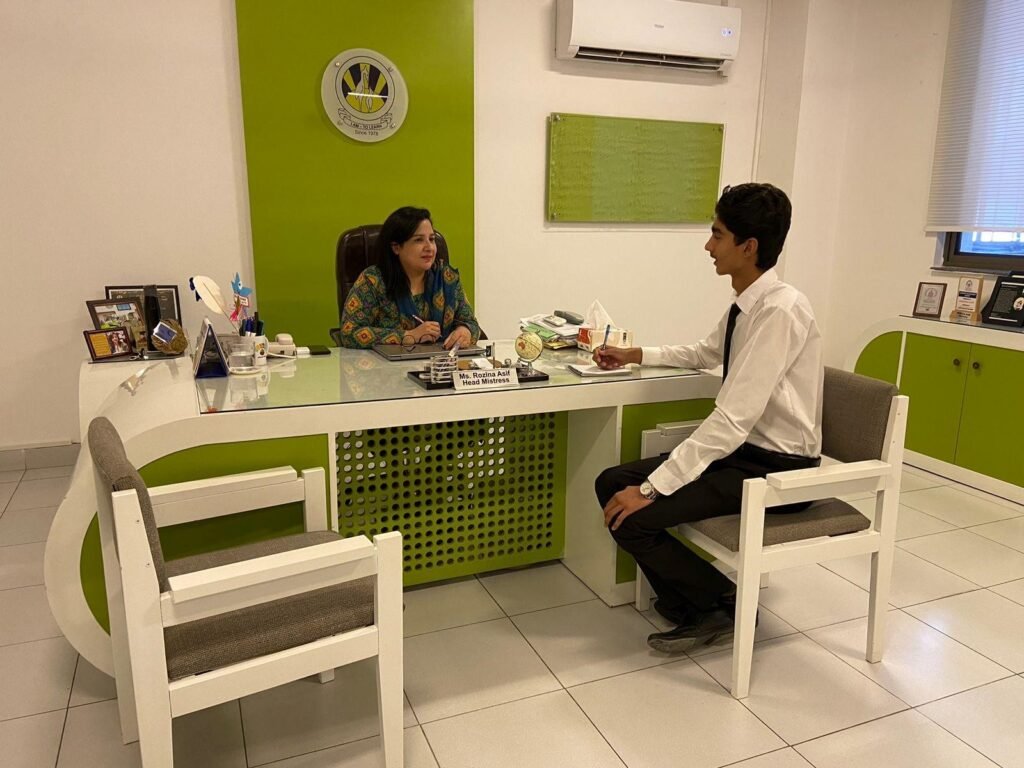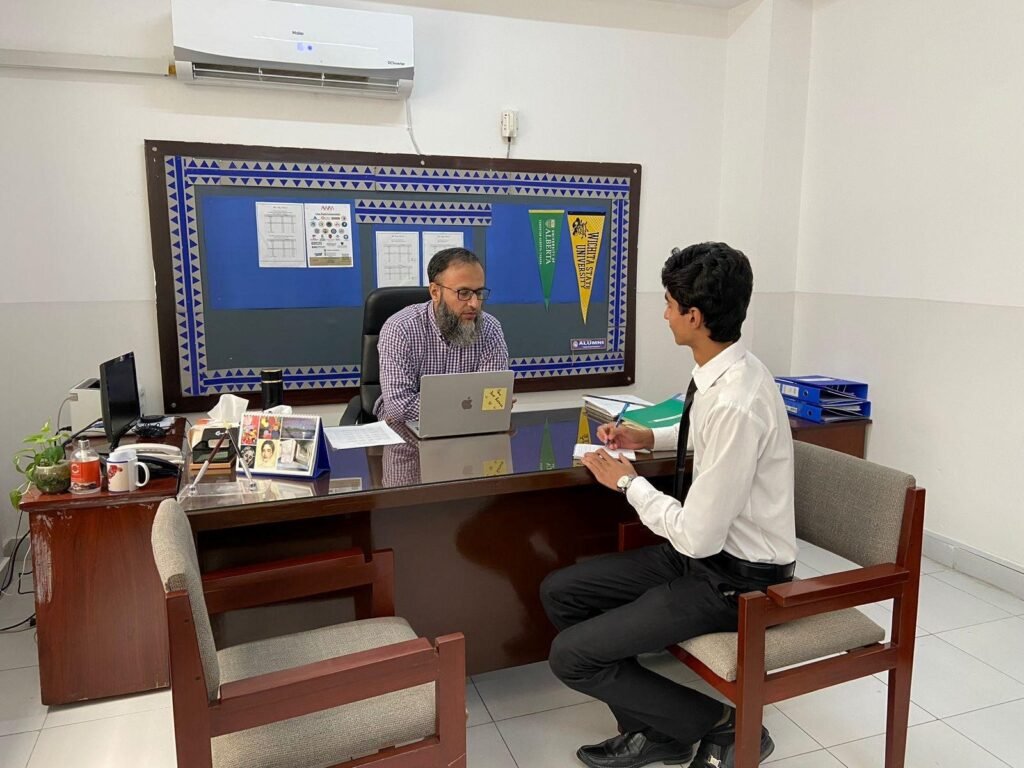Prologue
A Leader is more than a figurehead. A Leader is an individual with passion, resilience, and commitment. The role leadership plays in uplifting a community, society, or workplace is immense. Likewise, the leader can be viewed as a central pillar to a complex building. If the pillar falls, so does the rest. A skilled and effective leader is the cause of growth, progress, change, and development.
The premise of this study is to analyze and consider the vast impacts of leadership on driving progress and organizational effectiveness within developing economies. The aim is to grasp a better understanding on how a community led by a skillful leader differs from one lacking good leadership and similarly use evidence, facts and analytics to conclude the extent of impact leadership can have on advancement.
[1] “A leader is one who knows the way, goes the way, and shows the way.”
Key words:
- Leadership
- Driving progress
- Organizational effectiveness
- Developing economies
- Advancement
Observation Abstract
The essence of this paper is to judge and analyze the impacts of leadership based on previously compiled and identified facts as well as newly found evidence. For this purpose, a wide range of literacies, including articles, journals, former research papers, and case studies, have all been used to lay down a foundation for the primary objective.
Historical Context
The word ‘Leader’ has many definitions, all of which open up a long historical context. Throughout history, from the first civilization leadership has been the keystone to advancement, winning wars, and overcoming obstacles. From the Islamic Caliphs to Julius Caesar. From holding spears high and charging first to strategic thinkers and innovators. Old tales speak volumes of how impactful leadership is in contributing to the development in societies/economies. Some leaders are known by the ‘Golden Age’ of their communities/civilizations, while others, though not as popular but remain engraved in stone as sacrifices and pillars of resilience. As [2] rightly recognized, “The growth and development of people is the highest calling of leadership.”
Ideas from the past century
[3] Leadership is one of the major fields studied in respect to organizational behavior. The need for effective leadership is recognized all around the globe; in fields such as Business Economies, Politics and Governance, Education and Health. Leadership shows its impacts more clearly when assessing the developing countries/economies. Every organization needs a skillful Leader to drive progress and enlighten the workplace. [4] Effective leaders in developing countries are those who adapt their management practices to local conditions while maintaining global standards, thereby driving organizational performance and growth. [5] Leaders who can anticipate and adapt to the rapidly changing job market will be crucial in driving economic progress and organizational success in developing economies. [6] Leaders who demonstrate resilience and adaptability in crisis situations can inspire their teams to overcome adversity, leading to greater organizational resilience and success.
[7] Transformational leaders, through their vision and passion, are able to inspire followers to exceed their own self-interests for the sake of the organization, leading to higher levels of commitment and performance. [8] Authentic leadership is the foundation of long-term organizational success. [9] António Guterres the UN Secretary General said, “Leadership is not about being in charge. It is about taking care of those in your charge.”
Case studies of the past century
- [10] A study conducted in Chennai City confirmed that there was significant correlation between the impact of leadership and organizational effectiveness in the Service sector.
- [11] Leadership that fosters innovation and strategic thinking has been key to the success of companies like Tata and Huawei, driving both growth and global competitiveness.
- [12] A program led by McKinsey and company in 2016 concluded that leadership development programs tailored to local contexts are 1.5 times more likely to be successful in driving organizational performance.
- [13] A World Bank report in 2017 stated that leadership in public financial management has led to enhanced fiscal discipline and better resource allocation, contributing to economic stability and growth in Ghana.
Statistical overviews
- [14] Summary: This paper showcases the impact that leadership has on developing nations.
- Statistics: Countries with effective leadership strategies saw an average GDP growth rate increase of 2% annually compared to those without such strategies.
- Leadership training programs were found to improve productivity by 15% in organizations.
- [15] Summary: This study examines the impact of Leadership in the Education Sector.
- Statistics: Schools with strong leadership saw a 10-20% improvement in student test scores. Leadership development programs in schools led to a 12% increase in teacher retention rates.
- [16] Summary: This article researched the relation between business and leadership especially in developing economies.
- Statistics: Companies with effective leadership practices experienced a 25% higher return on assets (ROA). Leadership development initiatives contributed to a 20% reduction in employee turnover.
- [17] Summary: This article examines the role leadership plays in enhancing the effectiveness of non-profit organizations in developing countries.
- Statistics: Non-profit organizations with effective leadership reported a 20% increase in program success rates. Leadership development programs in nonprofits led to a 15% increase in donor retention rates.
Methodology
Keeping the objectives of this paper in mind, the techniques used to gather relevant data for primary research were as follows;
A survey was conducted with some of the current Leaders and CEOs of Pakistan. The questions were specifically structured to help us understand the views of the CEOs regarding the role and importance of leadership. Moreover, they helped us gain insights from impactful organizations about how they operate in real time and how the leaders manage their teams. The method of conduct was ‘Google Forms’ and the sample size for this survey is 3.
A secondary initiative was also put in place, through which we reached out to the heads of The City School Rawal Campus; one of the leading school systems in Pakistan. We set up physical interviews with the Principal and Senior Master. These discussions led us to identify and analyze the significance of positive leadership in the Education Sector. The question structures used were similar to the ones implemented in the survey; however, the purpose here was to judge how these leaders managed this organization and the approach taken was more of a case study. The sample size for the interviews was 2.
Discussion/Findings
Presentation of Survey:
About the contributors;
There were three personalities the researcher approached, all of whom are inspiring leaders and CEOs of Pakistan.
Summary;
- Tahir Nihad Bajwa who has led 20+ companies as CEO, believes that without leadership companies remain directionless. He says that one of the most impressive qualities of a leader is being the “jack of all trades.” Moreover, he views his subordinates as heart to heart friends and strategizes to lead by example and empathize with them when needed. He says that problems and challenges should always be sailed ahead of, and that pure intentions of uplifting fellows are essential for leadership.
- Rubab Tahir the CEO of GalEarth defines that an organization only replicates what a leader truly believes in. Some of the qualities that define a good leader, in her opinion, include; Ability to maintain composure, self-accountability, faith, clarity of purpose, and persistence. Her strategy is to conduct several thought-provoking sessions with her team to foster innovation and pursue connectivity. She aims to boost a culture of entrepreneurship and personal development in her organization over the next 5 years.
- Tariq Mehmood the chairman of Kamand Private Limited is of the view that guidance, self-example, deduction, honesty, and determination are some of the qualities that are found in a seasoned leader. He says that there are several problems in the workforce these days that a leader must overcome; including the unnecessary use of smartphones/procrastination and the reluctance of sticking with one firm for long periods of time. He advises that every professional, including a leader, needs to work hard to justify his pay.
Presentation of Interview 1:

About Contributor
Ms. Rozina Asif is the current Principal of The City School Rawal Campus with 25 years of dedicated experience in Education. She is also a published writer and renowned motivational speaker, and she has led several events for students across Pakistan.
Summary
Ms. Rozina believes that the purpose of leadership as a whole is to mobilize a team, give them a direction, motivate them, and develop strategies for the team to reach the desired results/goal. She emphasizes that leadership is about leading from the Frontline and gives an interesting example of this; “Whenever I am conversing with my teachers and they ask me how I knew certain things they faced or about their intentions, I remind them that I myself was a teacher once.” She emphasizes that skillful leadership is vital in education because the education sector grooms all other professions; doctors, engineers and future artists every profession finds its roots in education. When we asked her about how she managed to revolutionize and boost the campus to such an extent in her short period of 2 years; She briefed that it was a process involving comparative analysis with other campuses, fixing stereotypes of the staff, and most of all, engaging the student community and youth by various means.
Presentation of Interview 2:

About Contributor
Sir Nasir Malik is the current Senior Master (SM) and Student Counsellor at The City School Rawal Campus. He has over a decade of experience in educational leadership, teaching, and career counselling.
Summary
Sir Nasir credits the role of leadership in the society, and he remarks that a leader is one who develops organizational structure, sets standards, and brings a routine to the workforce. Sir Nasir believes that with great power comes great responsibility, and a leader should be an embodiment of hard work, and resilience. He is confident in the servant leadership style and emphasizes that the true essence of leadership lies in service, whether to the people or to an organization. He also states that leadership skills are essential for every student and emerging professional; he teaches students that leadership means “first to enter, last to leave” and advises them to think of leadership not as power but as a service to the people. Some mentioned role models are The Last Prophet (PBUH) of Islam and the 4 Caliphs, and he believes that every upcoming leader should study their rule and character.
Conclusion and Prospects
After thorough research and analysis, the conclusion of this paper is as follows; Leadership does play a vital role in the advancement of organizations and communities, including developing economies. Any community/organization led by a skilled and aspiring leader is bound to showcase better progress and development than one lacking in leadership. Moreover, good leadership has shown its positive impacts in sectors including, but not limited to; education, health, politics, business, and economics. A leader can be described as a keystone to any successful society or organization.
Future prospects for this paper include expanding the survey network to more respondents, as well as interviewing more figures and institutions from all over the world to gather a diverse range of data. Similarly, a deeper study of the charts and graphs of the mentioned former case studies might help provide better structure to the paper. Lastly, the data gathered from current influential leaders and heads could be assisted by Intel gathered from heads of startups and upcoming personalities. This method would help analyze leadership at all levels.
References
- [1] (John C. Maxwell) Khan, M. S., & Ismail, H. (2017). Leadership and Organizational Performance: A Study of Pakistani and Malaysian Universities.
- [2] (Harvey S. Firestone) Sial, M. H., Usman, M., Zulfiqar, M., Satti, M. A., & Khursheed, A. (2013). Impact of leadership on organizational effectiveness. Journal of Business and Management, 10(6), 54-63
- [3,10] Hariswaran B, Nishad Nawaz and Vijayakumar Gajenderan, Impact of Leadership on Organizational Performance in Service Organizations, International Journal of Management, 11(7), 2020, pp. 248-254.
- [4] Bloom, N., Sadun, R., & Van Reenen, J. (2012). The Organization of Firms across Countries. Quarterly Journal of Economics, 127(4), 1663-1705. Retrieved from Stanford Business
- [5] WEF Report World Economic Forum (2020) The Future of Jobs Report 2020 Retrieved from WEF
- [6] Jones, G., & George, J. (2019). Case Study: Leadership in Crisis: Ernest Shackleton and the Epic Voyage of the Endurance. Harvard Business Review.
- [7] Bryman, A. (2004). Qualitative research on leadership: A critical but appreciative review. The Leadership Quarterly, 15(6), 729-769
- [8] George, B., Sims, P., McLean, A. N., & Mayer, D. (2007). Discovering Your Authentic Leadership. Harvard Business Review.
- [9] United Nations Development Program. (2020). Human Development Report 2020.
- [11] Deshpande, R., & Farley, J. (2004). Corporate Leadership and Performance in Developing Economies: Case Studies from India and China. Harvard Business Review.
- [12] McKinsey & Company. (2016). Why Leadership Development Programs Fail: Insights from Developing Economies.
- [13] The World Bank. (2017). Leadership in Public Financial Management: A Case Study from Ghana.
- [14] House, R. J., & Aditya, R. N. (1997). The Social Scientific Study of Leadership: Quo Vadis? Journal of Management, 23(3), 409-473.
- [15] Leithwood, K., Harris, A., & Hopkins, D. (2008). Seven Strong Claims about Successful School Leadership. Educational Researcher, 36(3), 27-32.
- [16] Yukl, G. (2012). Effective Leadership Behavior: What We Know and What Questions Need More Attention. Academy of Management Perspectives, 26(4), 66-85.
- [17] Herman, R. D., & Renz, D. O. (1999). Theses on Nonprofit Organizational Effectiveness. Nonprofit and Voluntary Sector Quarterly, 28(2), 107-126.
Questionnaire for survey
Q1) Your Profile; Please share your contributions as a Leader/CEO and the name of your company, any other titles.
Q2) How long have you been in your current leadership position?
| 1-2 years | 3-5 years | 5+ years | 10+ years |
Q3) What is the size of your organization?
(Number of employees/staff)
| 1-10 | ±25 | ±50 | ±250 | ±500 |
Q4) What is the size of your organization?
(Annual Revenue)
| Less than 10 lakh | ±25 lakh | Above 50 lakh | Above 1 Crore |
| 5 to 10 Crore | More than 10 Crore | More than 50 Crore |
Q5) What is your view on the importance of leadership for organizational effectiveness and development?
Q6) What qualities do you think define a good leader?
Q7) How would you define your relation with your subordinates/team?
Q8) How do you motivate your staff/team and what tools or methods do you use?
Q9) As a leader what problems and challenges do you face and resolve to ensure the workplace runs smoothly?
Q10) Can you provide an example of a leadership strategy that has significantly contributed to your organization’s development goals?
Q11) How do you foster innovation and adaptability within your organization?
Q12) How do you set your targets and goals? (Could be individual or organizational)
Q13) What are your top three priorities for leadership development within your organization over the next five years?
Q14) What advice would you give to emerging leaders and which personalities would you like them to study/take inspiration from, if any?
Q15) Is there any other information that you would like to give regarding this topic, or any self-designed question you would like to address?


